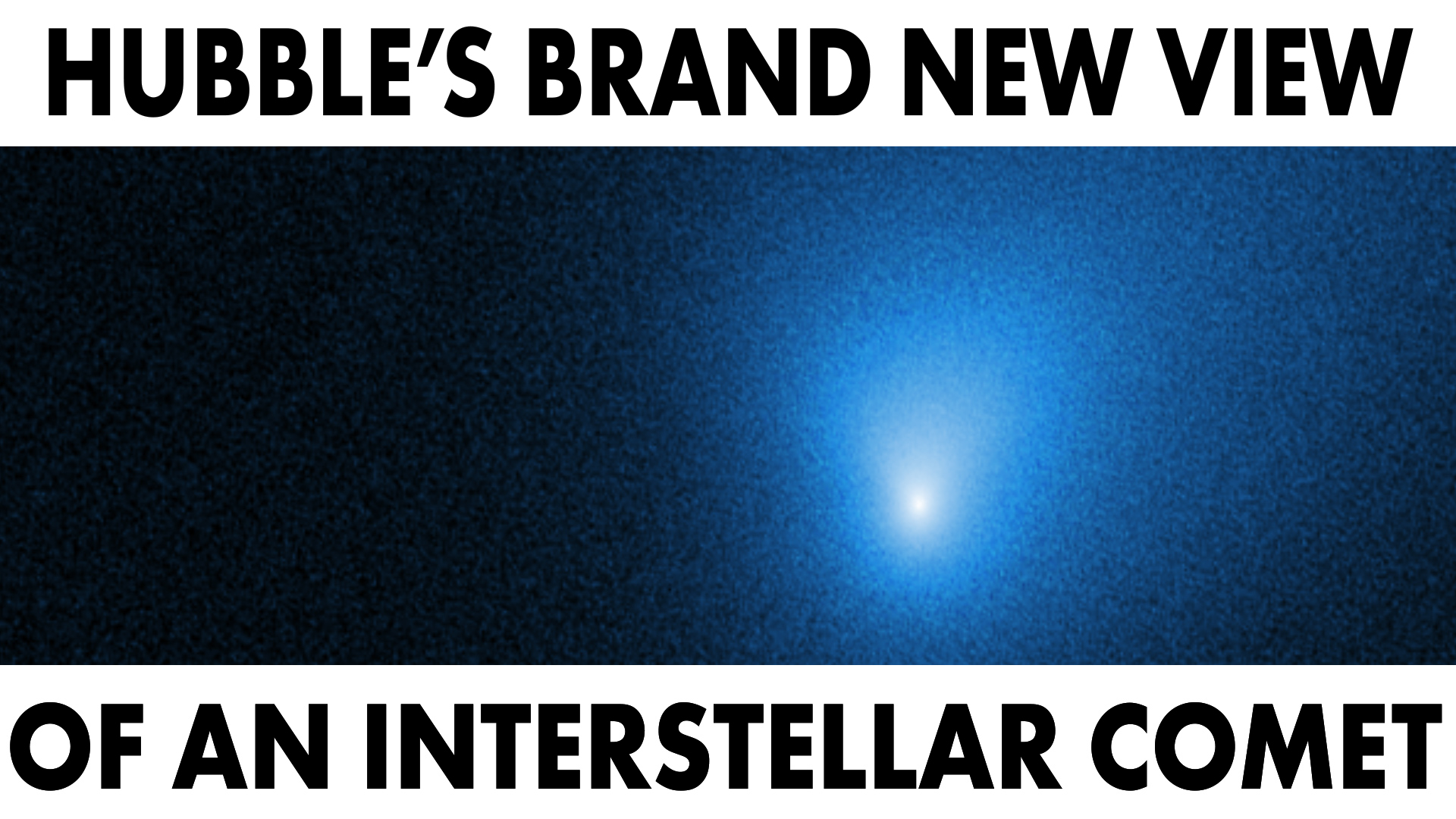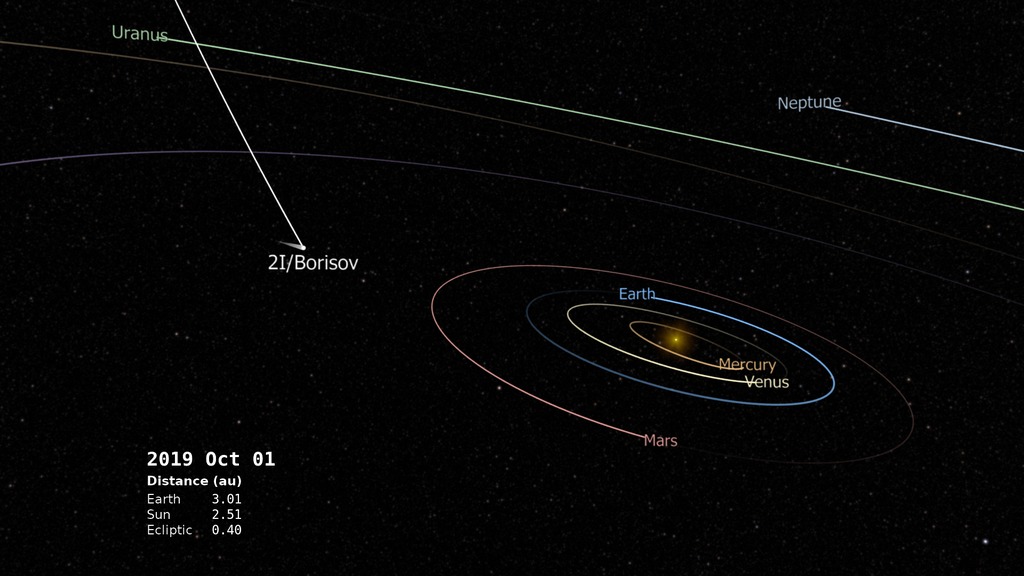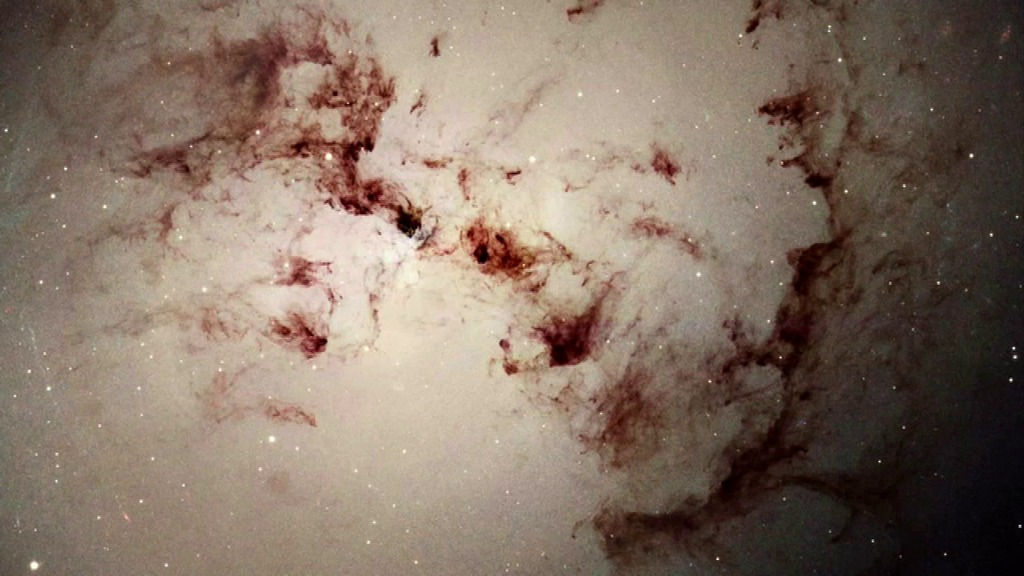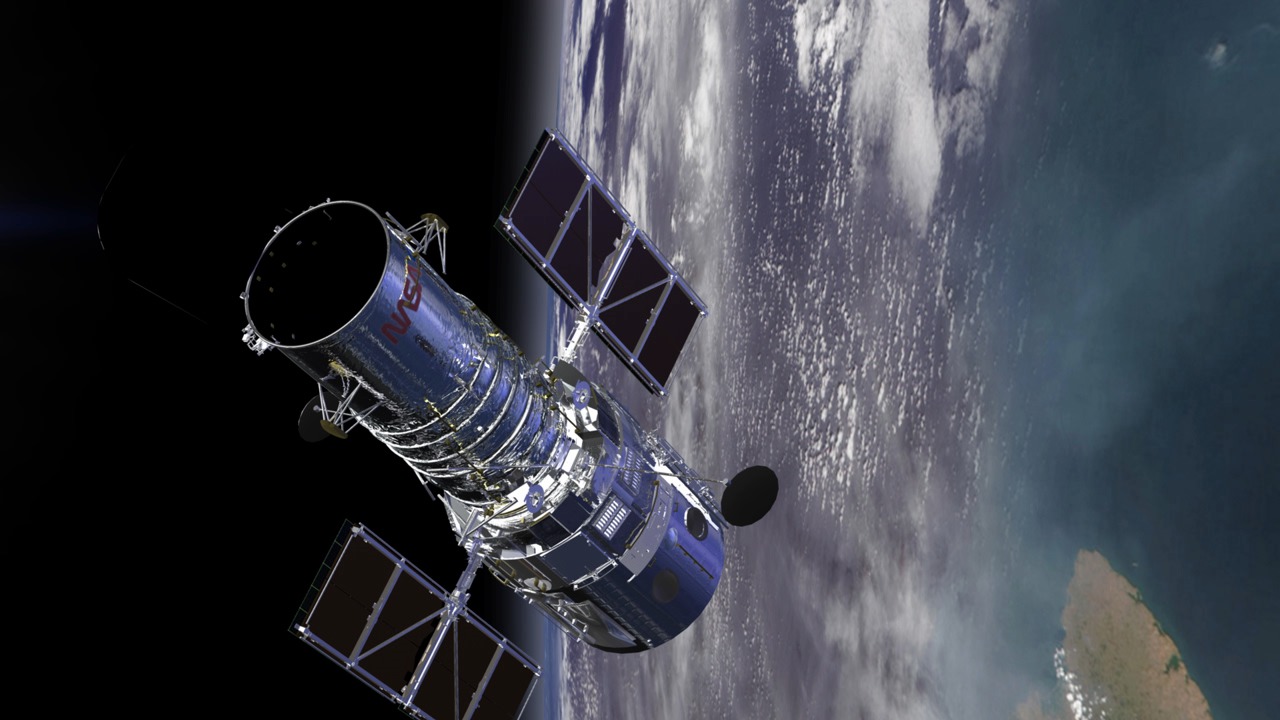Hubble Captures New Look At Ancient Comet From Beyond our Solar System Live Shots

Link to latest update and images as interstellar comet swings past the Sun.
Quick link to canned interview with Jennifer Wiseman looking off camera.
Quick link to canned interview with Max Mutchler
Quick link to canned interview with Heidi Hammel
Quick link to canned interview with Padi Boyd
Quick link to AUDIO INTERVIEW with Max Mutchler
The Hubble Space Telescope just captured a new image of the first known interstellar comet as it speeds towards our Sun. The comet named 2I/Borisov is an ancient ball of ice, rock and dust that formed in a distant star system. Scientists are clamoring to study this frozen time capsule shrouded in mystery, looking for clues of what may lie beyond our solar system.
Chat with Hubble scientists from 6:00 a.m. to 12:00 p.m. EST on Friday, December 13th, to learn about the out-of-this-solar-system discovery, find out what this comet can teach us about what lies beyond our own solar system and learn how your viewers may be able to see this interstellar visitor for themselves.
This comet is the second confirmed interstellar object visiting our solar system, and likely the first interstellar comet ever discovered. Scientists are taking advantage of this fleeting opportunity to observe this ancient ball of ice and dust before it departs our solar system forever.
Schedule an Interview
To schedule an interview, please fill out our form: https://forms.gle/MAbhBGYpSgtUzQsx5
Suggested Questions
Can you show us the latest images of this new comet?
How do we know it didn’t come from our solar system?
How can we see this comet for ourselves?
Next year Hubble will be celebrating its 30th birthday! How’s it doing?
Where can we learn more about this image and the Hubble Space Telescope?
Bonus Questions
What are scientists hoping to learn from this interstellar visitor?
What other comets has Hubble looked at?
What’s the difference between an asteroid and a comet?
What makes Borisov different from other comets we’ve observed?
Why are you excited about this new discovery?
Satellite Coordinates
HD Satellite Coordinates for G17-K18/Upper: Galaxy 17 Ku-band Xp 18 Slot Upper| 91.0 ° W Longitude | DL 12069.0 MHz | Vertical Polarity | QPSK/DVB-S | FEC ¾ | SR 13.235 Mbps | DR 18.2954 MHz | HD 720p | Format MPEG2 | Chroma Level 4:2:0 | Audio Embedded
B-roll package
Canned interview with NASA Scientist Jennifer Wiseman looking off camera
Canned interview with Space Telescope Science Institute scientist Max Mutchler.
Canned interview with Plantary Astronomer Heidi Hammel
Canned interview with NASA Scientist Padi Boyd
Audio interview with Max Mutchler. Includes transcript
Credits
Please give credit for this item to:
NASA's Goddard Space Flight Center
-
Producers
- Courtney A. Lee (ADNET Systems, Inc.)
- Bradley Hague (GSFC Interns)
- Michelle Handleman (USRA)
- Katie Atkinson (ADNET Systems, Inc.)
- Christina Brooke Mitchell (KBR Wyle Services, LLC)
-
Technical support
- Aaron E. Lepsch (ADNET Systems, Inc.)
-
Editor
- Paul R. Morris (USRA)
Release date
This page was originally published on Monday, December 9, 2019.
This page was last updated on Wednesday, May 3, 2023 at 1:45 PM EDT.



